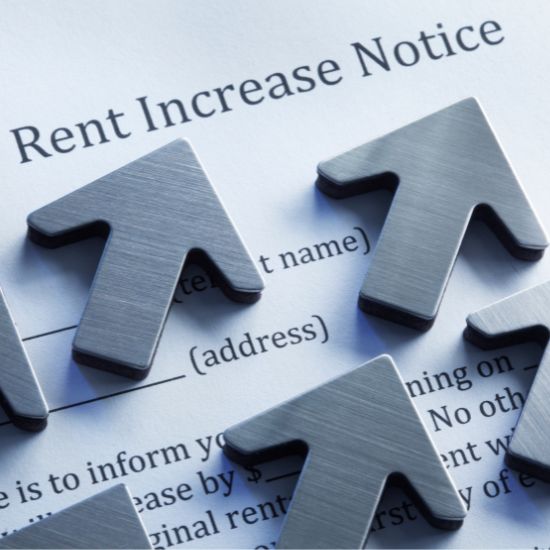Travel back through time to 1995. What do you recall about that tumultuous year?
- Million Man March on Washington DC
- San Francisco 49ers defeat San Diego Chargers 49-26 at Super Bowl XXIX
- California passes the Costa-Hawkins Rental Housing Act
If you are a long-term tenant and you missed that last item, you need be aware how the 27-year-old Costa-Hawkins Act still protects some tenants from skyrocketing rent increases. Other tenants, in the same apartment, who began renting after January 1, 1996 might be at risk for a huge rent increase.
What is Costa-Hawkins?
The Jan. 1, 1995 law is a key state statute designed to manage the power of California cities to regulate individual rental markets. The statute has two parts:
- It exempts several specific types of properties from rent control, including single-family dwellings, condominiums and newly constructed apartment buildings (apartments built after February 1, 1995 are considered new under the act).
- The statute also bans vacancy control, which means that landlords can raise the rent to current market value after an original protected tenant moves out. Landlords must then follow different rules as defined by local jurisdictions.
Why was Costa-Hawkins Created?
Political upheaval, tenant activism and landlord pressures were all at play decades before the act was created.
The lack of available rental housing in 1970-80s California created an urgent need for new housing units. Supposedly, developers hesitated to build new units if they were not able to recoup construction costs by charging market rates. Of the 452 cities in California, a few larger municipalities created their own rent control ordinances, resulting in wide variations of rules throughout the state.
A bipartisan effort led to the Act. Democratic Senator Jim Costa and Republican Assemblyman Richard Hawkins sponsored the bill. Republican Governor Pete Wilson signed it into law as HB 1164 in 1995.
Costa-Hawkins in San Francisco
The City San Francisco Rule and Regulations specifically addresses section 6.14 of the Act. Section 6.14 involves the departure of the last remaining original tenant with “protected status.” Once an original tenant leaves the apartment, the landlord must give both subtenants and cotenants a copy of Rules and Regulations 6.14 Notice to raise the rent of remaining lawful occupants who did not reside in the apartment prior to January 1, 1996. Then the landlord must give a 6.14 notice to the subsequent occupants and cotenants within 60 days of the landlord’s actual knowledge of the occupancy by the new occupant(s) of the apartment.
If a 6.14 notice is not given to the subsequent occupants and cotenants within 60 days after the landlord’s actual knowledge, this establishes a rebuttable presumption that notice was not given within a reasonable period of time. Therefore, the new rent increase might not be valid as the Rules and Regulations allow a landlord to raise the rent even if no notice was served on subsequent occupants and cotenants.
Subtenants And Cotenants – What to Know
Subtenant: someone who subleases or rents all or part of a rental property from a tenant.
Cotenant: two or more tenants to live together in the same apartment. There might be one rental agreement with all tenants named as cotenants, or sometimes each co-tenant has an oral or written rental agreement.
Under the Costa-Hawkins act, a San Francisco subtenant who resided in an apartment before January 1,1996 is not subject to such a rent increase after the original occupant departs. A co-tenant is not subject to such a rent increase either, regardless of when the co-tenant moved in. A co-tenant normally has an oral or written agreement with the landlord, or has become a tenant “by the conduct of the parties such as the landlord’s acceptance of rent.”
The “Mosser Rule”
In 2015 a San Francisco landlord, Mosser Companies, learned the original tenants, of one of his Fell Street apartments moved out. After the original tenants left, their adult son remained in the apartment and continued paying the original rent. The court of appeal denied the landlord’s attempt to raise the rent by more than 50%. The court ruled that although the son was not the original lessee as a minor, he was a qualifying subtenant as part of the family and “grandfathered in” to original lessee status. Therefore, the landlord’s attempt to increase the rent was denied.
Document Your Protected Status as a Long-Term Tenant
You should keep track of documents in case your tenancy is ever challenged by your landlord. Lease agreements, bank statements, rent receipts, utility bills, envelopes with the stamp cancellation dates, tax records, passports and other records will all be helpful to establish when you began living in an apartment.
Keep your documents in a folder as sometimes you will not be able to obtain documents of 30-year-old papers. These records are important to help you prevail in a Costa-Hawkins related dispute. Consult an experienced tenant rights attorney if you are in need of assistance.


 (415) 533-0735
(415) 533-0735 (415) 843-0496
(415) 843-0496